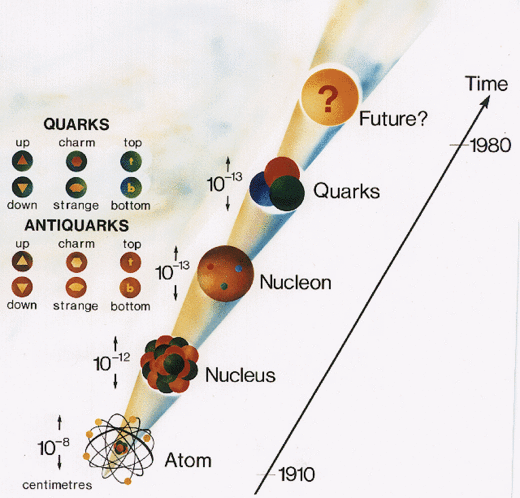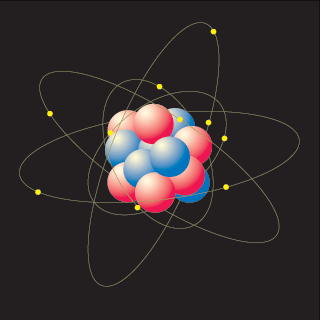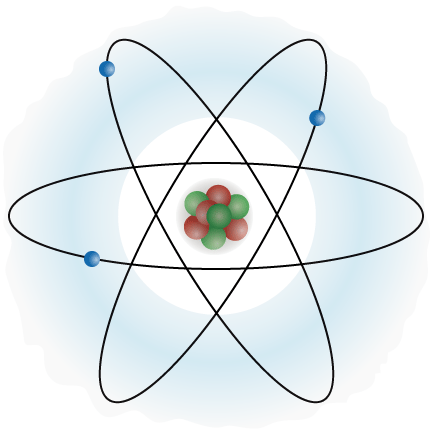 
 字體:小 中 大
字體:小 中 大 |
|
|
|
| 2008/07/24 15:33:42瀏覽2136|回應0|推薦5 | |
以下為個人讀書筆記,屬節錄摘要類。為避免涉及版權問題,特註明出處,包括作者、出版社、章節。 [The Void] by Frank Close, "How empty is an atom?" A period dot contains 100 billion carbon atoms. To see one of these with the naked eye, you would need to magnify the dot to be 100 meters across. To see the carbon atomic nucleus, you would need the dot to be 10,000 kilometers: as big as the earth from pole to pole. The central nucleus of a hydrogen atom is a single positively charged particle known as a proton. It is the path of the electron, remote from the central proton, that defines the outer limit of the atom. Journeying out from the center of the atom, by the time we reach the edge of the proton, we have only completed one ten thousandth of the journey. An electron is less than one thousandth the size of the proton, or ten millionth that of the atom. An atom is apparently a perfect void: 99.9999999999999 per cent empty space. A proton or neutron is a cluster of smaller particles called quarks. We have to enlarge the dot to 100 meters to see an atom, to the diameter of the planet to see the nucleus, to reveal the quark we would need to expand the dot out to the Moon, and then keep on going another twenty times more distance. Between the compact central nucleus and the remote whirling electrons, atoms in particle terms are mostly empty space, and the same can be said of the innards of the atomic nucleus. In summary, the fundamental structure of the atom is beyond real imagination, and its emptiness is profound. Atoms as huge voids may be true as concerns the particles within them, but that is only half the story: their inner space is filled with electric and magnetic fields. It is these forces that give solidity to matter, even while its atoms are supposedly ‘empty’. The atom is far from empty. The nucleus is the source of powerful electric fields that fill the otherwise ‘empty’ space within the atom. These intense electric fields are what hold the electrons in their atomic prisons. Positive charge concentrates at the very center of the atom, leading to the picture of the ‘empty’ atom in terms of its particles but filled with electric field.
|
|
| ( 知識學習|科學百科 ) |












